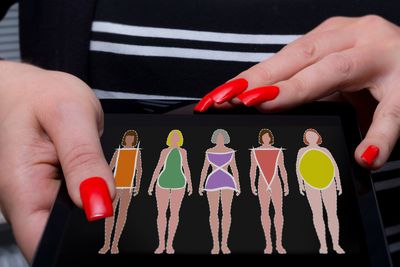Does your weight go to your middle or to your thighs and hips? What used to simply make fitting in clothes a problem has emerged as an important indicator of future good health. Called waist-to-hip ratio, or WHR, knowing this number can help you reduce your chances of developing heart disease, diabetes, osteoporosis, obesity and more.
"We're numbed by the scale," says Marie Savard, M.D., co-author of Apples and Pears: The Body Shape Solution for Weight Loss and Wellness (Atria Books, 2005). "We need to measure health in inches, not in pounds."
Savard explains that apple-shaped women usually have large waists and breasts, but slender legs and hips. They build up visceral fat in the belly, putting them at greater risk for certain diseases. Yet exercise and healthful eating can help. If you're pear-shaped, you're probably small on top, have a well-defined waistline, and are larger on your bottom. You have some health risks, but pear-zone fat is actually protective.
It's easier to figure out your waist-to-hip ratio (WHR) than your BMI (body mass index) and is more important to your overall health. Here's how to accurately determine your body type by finding your WHR:
- Stand straight, but relaxed (don't pull in your stomach). Measure around your waist with a flexible tape measure, held loosely. If you don't have a waist, measure the widest part of your middle.
- Then measure around your hips, about 3 to 4 inches lower than your hip bones, where your lower body is widest.
- Divide your waist measurement by your hip measurement to get your WHR.
- You're a pear if your WHR is 0.80 or lower. If it's higher, you're an apple.
"Apple-shaped women have a naturally higher metabolism, so losing waist size will be easier," Savard says. She recommends setting a goal of losing two inches in waist circumference. Beginning a walking program can help make that happen, she adds.


